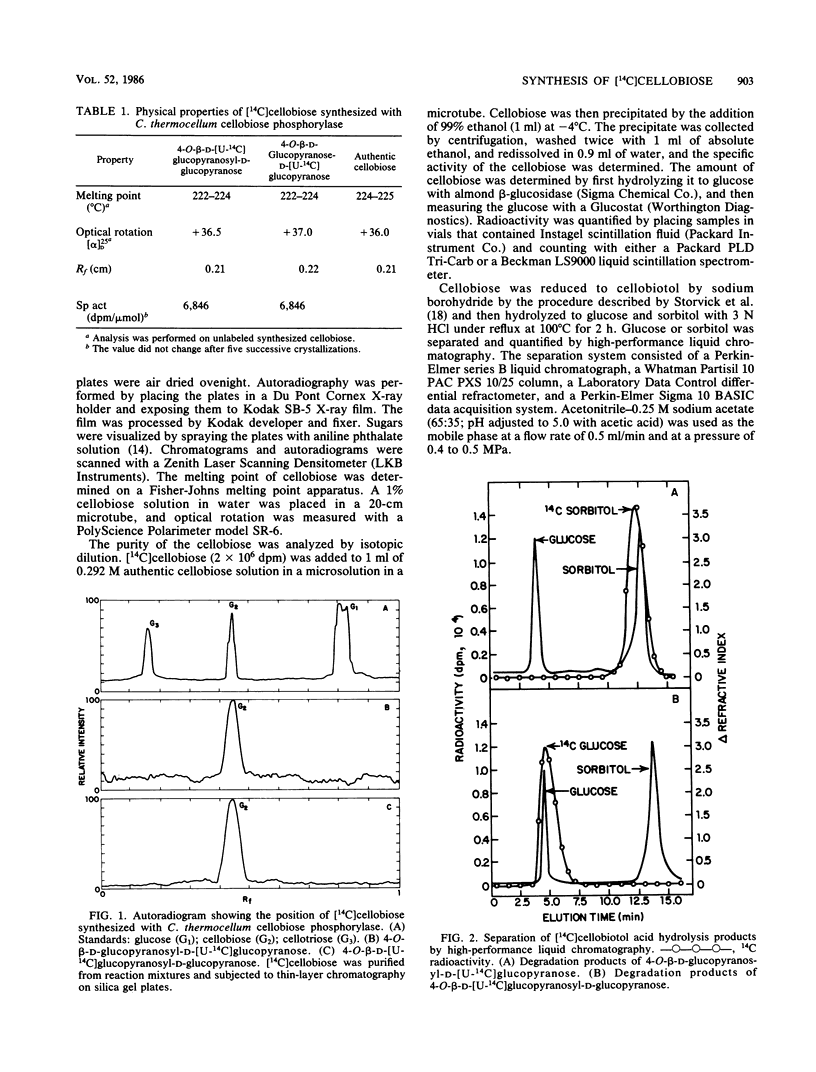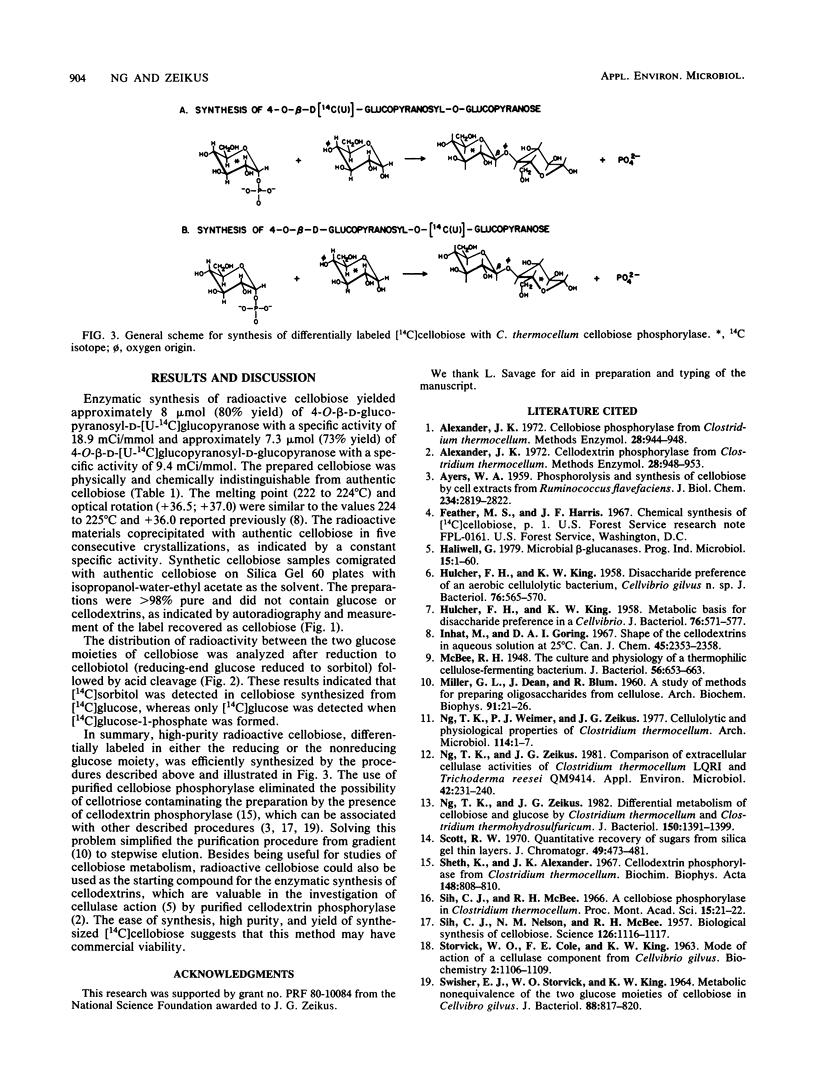Abstract
Cellobiose labeled either at the reducing end (4-O-β-d-glucopyranosyl-d-[U-14C]glucopyranose) or at the nonreducing end (4-O-β-d-[U-14C]glucopyranosyl-d -glucopyranose) was synthesized with Clostridium thermocellum cellobiose phosphorylase at greater than 98% purity. The radioactive cellobioses were identical to authentic cellobiose in melting point, optical rotation, isotopic dilution, and chromatographic properties.
Full text
PDF


Selected References
These references are in PubMed. This may not be the complete list of references from this article.
- AYERS W. A. Phosphorolysis and synthesis of cellobiose by cell extracts from Ruminococcus flavefaciens. J Biol Chem. 1959 Nov;234:2819–2822. [PubMed] [Google Scholar]
- HULCHER F. H., KING K. W. Disaccharide preference of an aerobic cellulolytic bacterium, Cellvibrio gilvus n. sp. J Bacteriol. 1958 Dec;76(6):565–570. doi: 10.1128/jb.76.6.565-570.1958. [DOI] [PMC free article] [PubMed] [Google Scholar]
- HULCHER F. H., KING K. W. Metabolic basis for disaccharide preference in a Cellvibrio. J Bacteriol. 1958 Dec;76(6):571–577. doi: 10.1128/jb.76.6.571-577.1958. [DOI] [PMC free article] [PubMed] [Google Scholar]
- McBee R. H. The Culture and Physiology of a Thermophilic Cellulose-fermenting Bacterium. J Bacteriol. 1948 Nov;56(5):653–663. doi: 10.1128/jb.56.5.653-663.1948. [DOI] [PMC free article] [PubMed] [Google Scholar]
- Ng T. K., Weimer T. K., Zeikus J. G. Cellulolytic and physiological properties of Clostridium thermocellum. Arch Microbiol. 1977 Jul 26;114(1):1–7. doi: 10.1007/BF00429622. [DOI] [PubMed] [Google Scholar]
- Ng T. K., Zeikus J. G. Comparison of Extracellular Cellulase Activities of Clostridium thermocellum LQRI and Trichoderma reesei QM9414. Appl Environ Microbiol. 1981 Aug;42(2):231–240. doi: 10.1128/aem.42.2.231-240.1981. [DOI] [PMC free article] [PubMed] [Google Scholar]
- Ng T. K., Zeikus J. G. Differential metabolism of cellobiose and glucose by Clostridium thermocellum and Clostridium thermohydrosulfuricum. J Bacteriol. 1982 Jun;150(3):1391–1399. doi: 10.1128/jb.150.3.1391-1399.1982. [DOI] [PMC free article] [PubMed] [Google Scholar]
- SIH C. J., NELSON N. M., McBEE R. H. Biological synthesis of cellobiose. Science. 1957 Nov 29;126(3283):1116–1117. doi: 10.1126/science.126.3283.1116. [DOI] [PubMed] [Google Scholar]
- STORVICK W. O., COLE F. E., KING K. W. MODE OF ACTION OF A CELLULASE COMPONENT FROM CELLVIBRIO GILVUS. Biochemistry. 1963 Sep-Oct;2:1106–1110. doi: 10.1021/bi00905a034. [DOI] [PubMed] [Google Scholar]
- SWISHER E. J., STORVICK W. O., KING K. W. METABOLIC NONEQUIVALENCE OF THE TWO GLUCOSE MOIETIES OF CELLOBIOSE IN CELLVIBRIO GILVUS. J Bacteriol. 1964 Oct;88:817–820. doi: 10.1128/jb.88.4.817-820.1964. [DOI] [PMC free article] [PubMed] [Google Scholar]
- Scott R. W. Quantitative recovery of sugars from silica gel thin layers. J Chromatogr. 1970 Jun 24;49(3):473–481. doi: 10.1016/s0021-9673(00)93662-8. [DOI] [PubMed] [Google Scholar]


